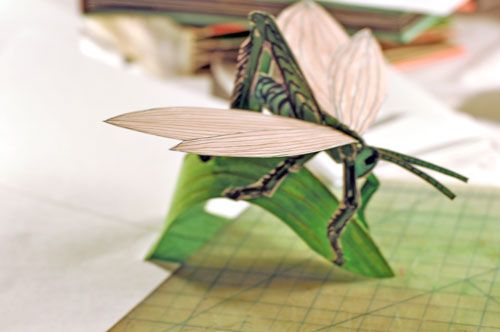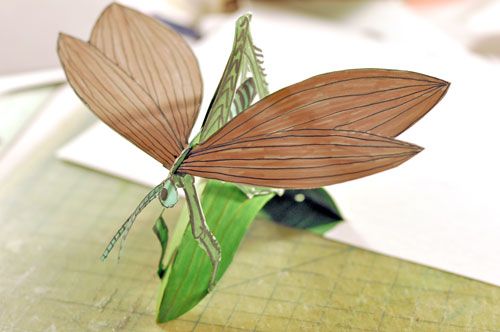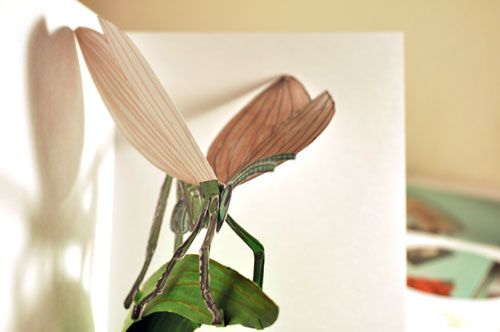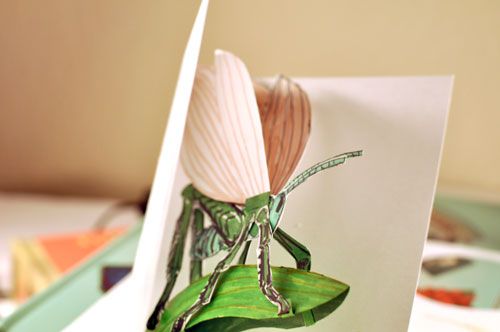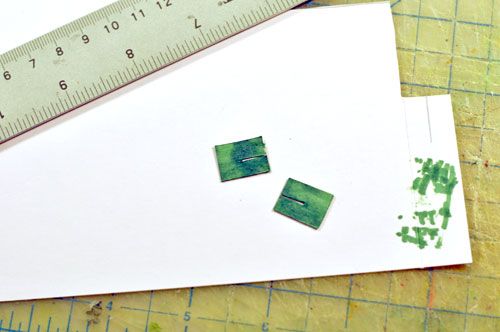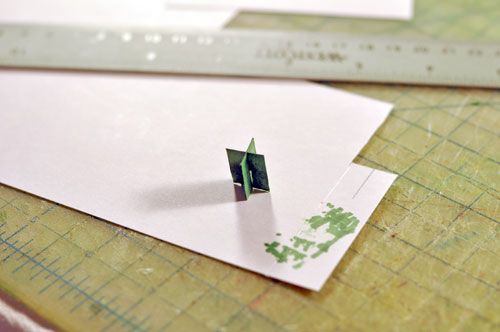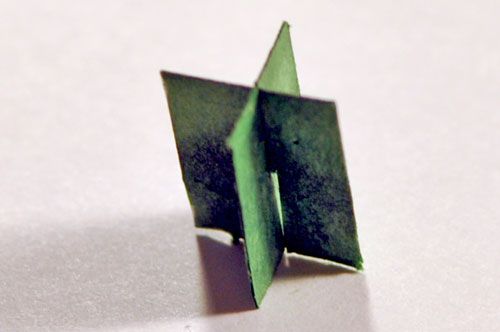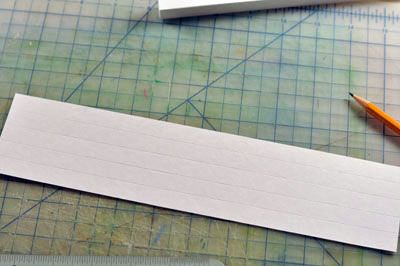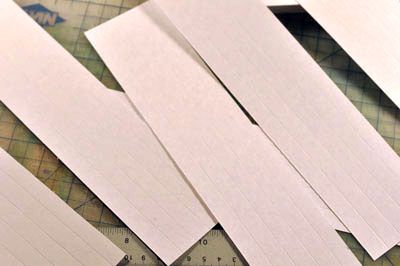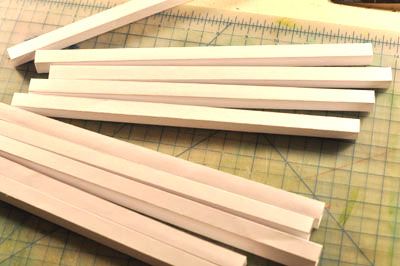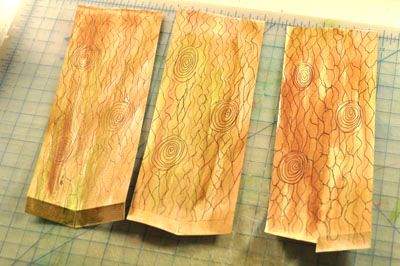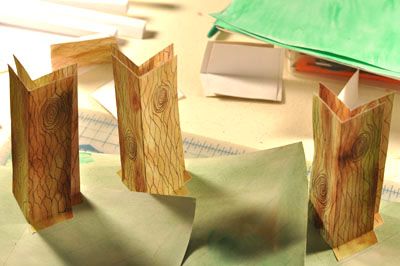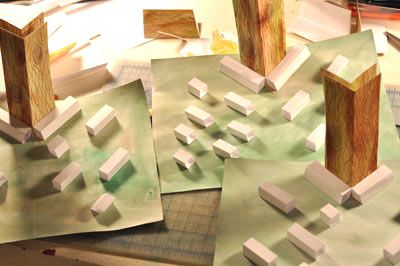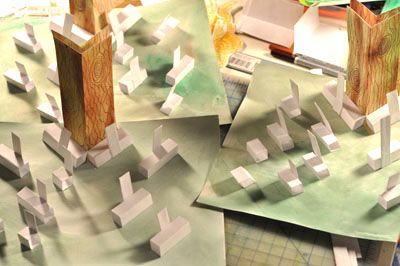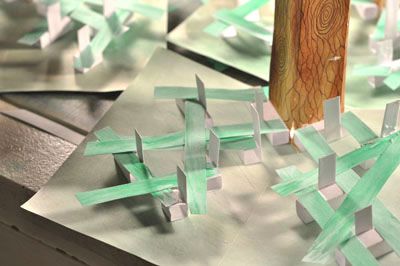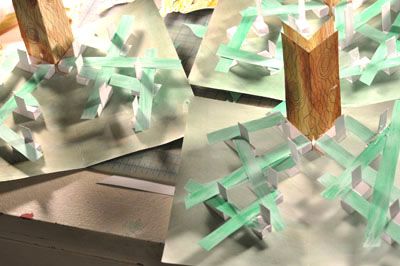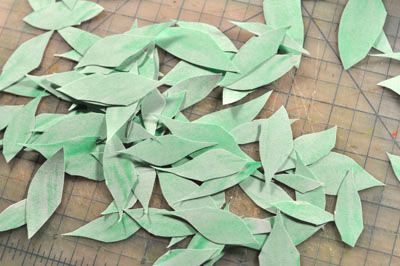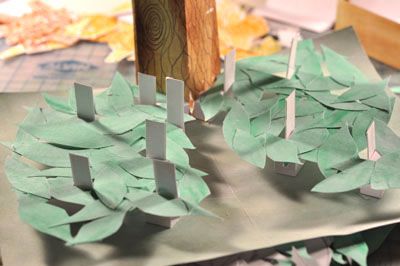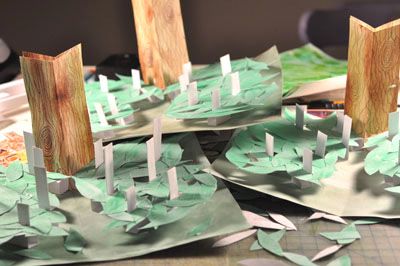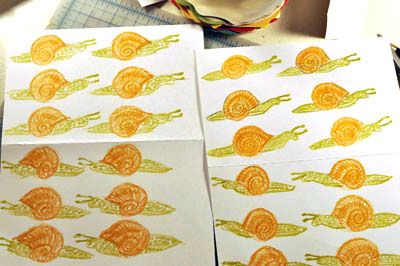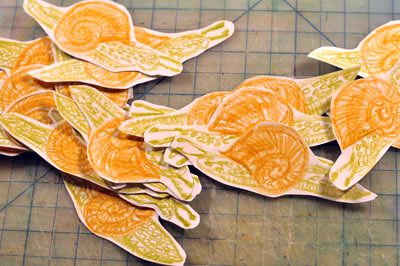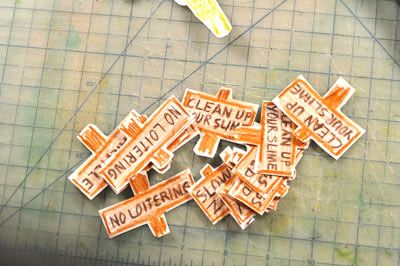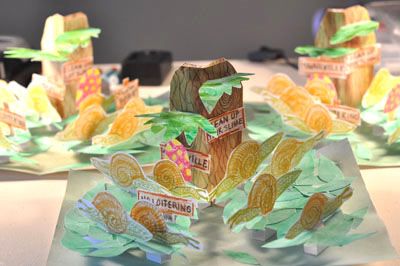I'm running out of time. I didn't realize until today that this card must be delivered to San Francisco by Saturday. Monday, tomorrow, is a holiday. The card must be in the mail Tuesday morning. That leaves tomorrow for whatever further pages I can manage and for a cover.
This page is similar to the first page in that is depicts a single grasshopper against a simple background. The background is not shown here. It is a single mature but still green wheat stalk with leaves. Man, I've got my wheat spike drawing act down. The difference between the two pages is this depicts the entire bug, all six legs, full body with wings spread. A broad leaf, broader than an an actual wheat leaf, lifts up, arcs outward, and plops down right off the page toward the viewer, the leaf tip even with the flat open card. The grasshopper is attached to the leaf so it appears as if the bug is jumping out of the card onto the viewers lap. The leaf is split in half lengthwise and reconnected at a curve, most unusual for pop-uppery. The legs of the bug are attached to the edges of the leaf, so when the leaf spreads open, forced by the opening of the card, then the bug's legs are forced open too.
The bug is flat. there is an X mechanism held loosely through the center of the bug, two sets of front legs are attached to the bottom of the X and two sets of wings are attached to the top of the X. The wings open and close as the front sets of legs spread and fold, due to being attached to the X. When the card is closed, the leaf folds back into the card, compresses together as its V collapses, forcing the legs to collapse with them, along with the wings. It's like a miracle, but it's actually the opening and closing of the card forces the base of leaf which forces the tip of leaf which forces the legs of the bug which forces the wings of the bug.
This is the X mechanism that is positioned at a slot at the grasshopper's thorax. It's made of two tiny 1/2" pieces of card stock. A slit is made 1/4" through the center of each tiny square then the slots are matched like the cardboard pieces that separate bottles in a case, if you've ever seen that and marveled how the whole thing can fold flat. Whoever thought of that is totally brill-o.
Notice the tiny slots.
The slots are matched.
Like this:
The X is folded flat and passed through another slot made in the grasshopper. You will notice on a real grasshopper's anatomy that two sets of wings are positioned directly above the front two sets of legs. When the X is opened, then a tiny platform is created for two legs on each side on the bottom platforms and for two wings on each side on the top platforms. Now, it would have been easier to just draw two legs for one side of the bug on the same card as two wings of the opposite side of the bug and make two such cards then form an X with them, but how to get that X positioned in the proper place on the grasshopper? A slit large enough for either the legs or the wings to pass through must be made and then sealed back. I tried that, it works but it was ugly. It occurred to me I could make a tiny X then glue legs and wings to it.
Once the bug is standing on four of its legs then their position on the leaf can be located. Tiny tabs attached at those spots first on the leaf then the bug to the tabs.
Open and close the card to test for fit and for proper folding. Imagine my delight to discover that nothing interferes with the action and nothing sticks out beyond the edges of the card.
More details, if you like, on the construction of this page are available here. There were a few false starts, a few trials not photographed of various shaped leaves and angles of attachment, lengths, and so forth.
